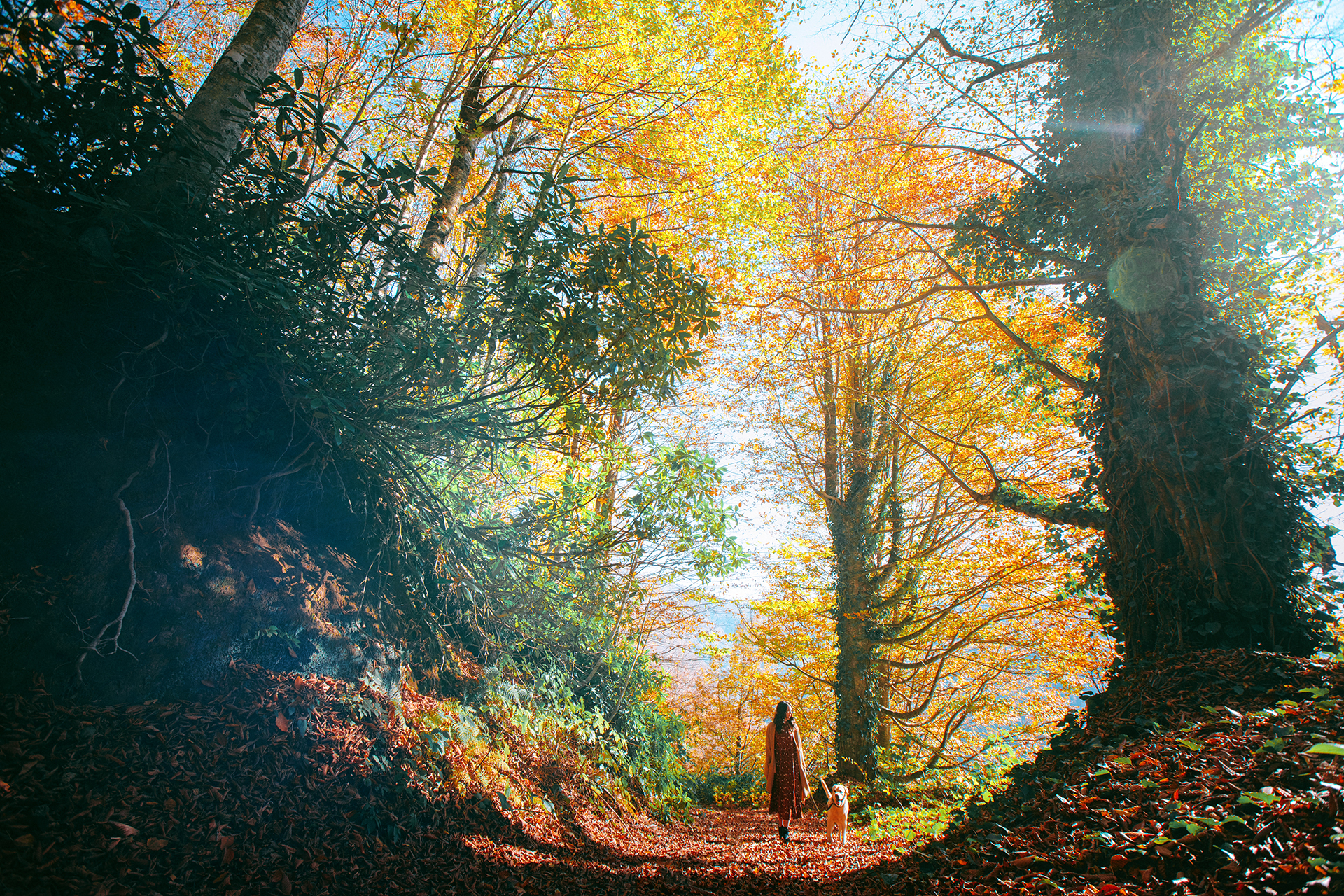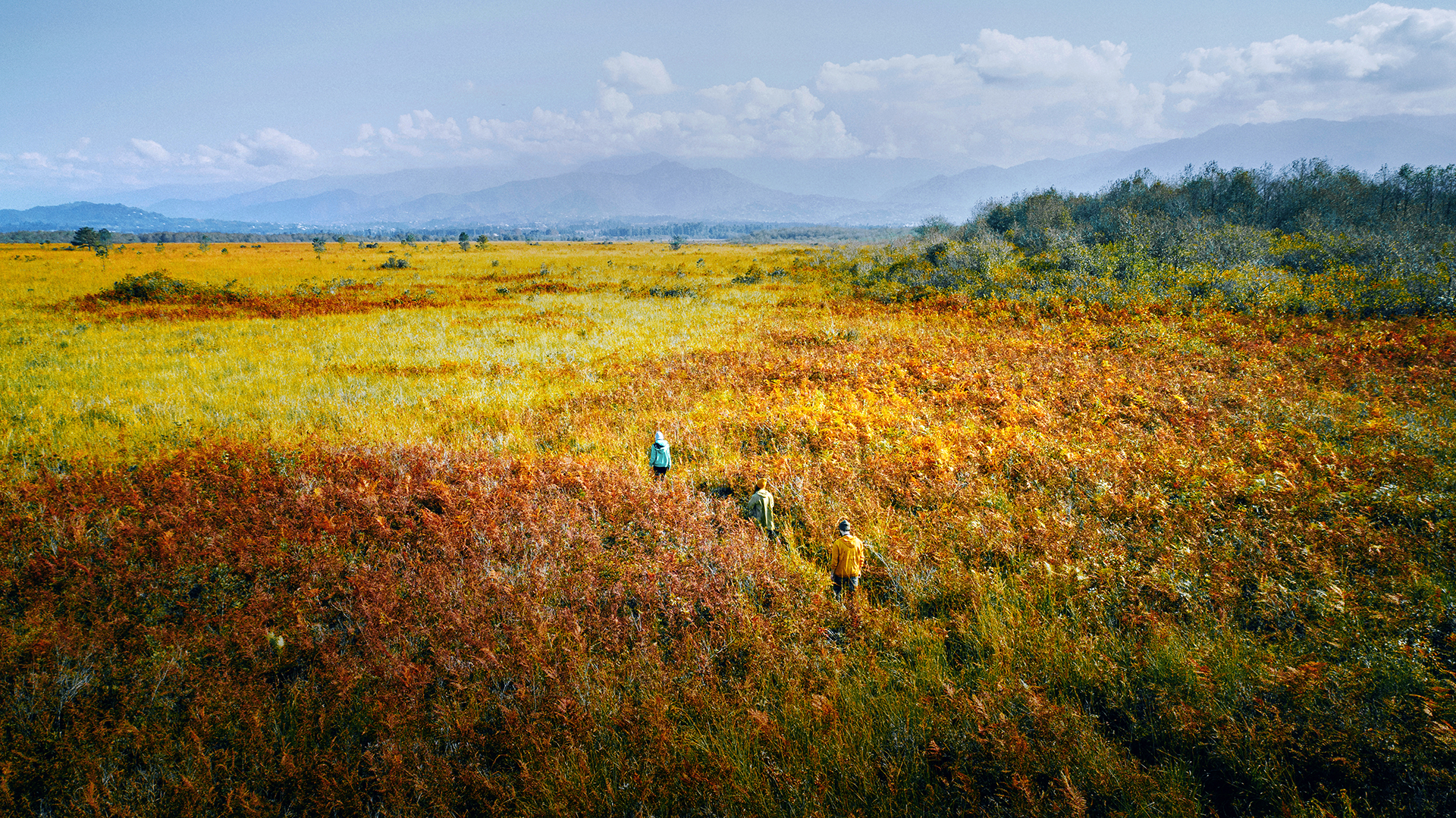UNESCO natural world heritage sites of Ajara
UNESCO natural world heritage sites of Ajara
If you're seeking an adventure in Georgia that offers a chance to relax, discover new and unique experiences, and impress your friends with the wonders of your trip, Ajara is the perfect destination. Home to four UNESCO-protected national parks - Kobuleti Protected Areas, Mtirala National Park, Kintrish Protected Areas, and Machakhela National Park - Ajara's natural beauty is recognized as a treasure of the world. Part of the "Tropical Forests and wetlands of Kolkheti," these parks are a must-visit for any nature lover."
It’s hard to find a place where you can experience four such uniquely biodiverse areas at the same time. Whether you have limited time and can only visit one, or are able to see all four, the memories of this trip will be unforgettable. The choice is yours to make.
The protected area of Kobuleti is home to the world's only white sphagnum moss, which thrives in the region's unique Ispani peatland. These colorful, living "carpets" of moss not only add beauty to the area, but also play a vital role in the creation and preservation of peat bogs by retaining water and decomposing dead plant matter. Recognized by UNESCO as a unique natural heritage site and protected by the Ramsar Convention as a habitat for internationally important wetland waterfowl, the Kobuleti peatland is truly one-of-a-kind and a must-see for nature enthusiasts.
The white moss found in the Kolkheti peat bogs has the remarkable ability to absorb up to thirty times its own weight in water. Its color changes throughout the year - from white in May to a dry, cloud-like appearance in summer, to a greenish-pink hue in autumn and winter. This Ice Age species has been protected and preserved by the peatland it calls home.
Located 28 kilometers from Batumi, the Ispani sphagnum peatlands of Kobuleti are best explored with a guide from the Kobuleti Protected Areas Visitor Center. Here, you can rent wooden skis to easily traverse the peatland, as well as visit a tower offering panoramic views of the area and the opportunity to observe migratory birds. The protected area also offers trails for educational and scientific tours, and you can find more information about services and activities on the official website: www.apa.gov.ge. Be sure to visit in spring to witness the flowering of the endemic Kolkhuri Dumpara species.
For an even more intense vacation experience, consider visiting Mtirala National Park after exploring the sphagnum peatlands of Kobuleti. Sometimes, a break from the beach and scorching sun is in order, and what better place to recharge and breathe in fresh air than in the mountains? Mtirala National Park, the most humid place in Georgia and all of Europe, is known for its frequent rain and thick fog, earning it the name "Mtirala," which means "crying."
Mtirala National Park is a paradise for nature lovers, offering stunning green hills, breathtaking landscapes, and rushing rivers. Upon arrival, you can choose from a variety of hiking trails, visit a waterfall and lake, try your hand at optional activities such as ziplining, and end the day with a delicious local dinner. The park features two tourist routes of varying difficulty: the 7 km long "Tsablnara" trail, which is easy, and the more challenging 16 km long "Tsivtskaro" trail, which takes two days to complete.
Every minute spent at Mtirala National Park will be a memorable one, but be prepared for potentially wet conditions and wear comfortable shoes. Don't miss the chance to visit the lake and 15 meter high waterfall on your hike. For those seeking a more challenging adventure, the "Tsivtskaro" trail is a two-day trek through a broad-leaved mixed forest of the Kolkhi type, featuring diverse vegetation and natural springs, ending at an elevation of 1250 meters. There is a tourist shelter along the way on the 9th kilometer for those needing to stop overnight.
Another UNESCO-protected destination to consider is Kintrishi National Park, located in the Kobuleti Municipality, a beautiful seaside resort 60 kilometers from Batumi. Nestled in the picturesque valley of the Kintrish River between the village of Tskhvemani and the Khino mountains, the park was established in 1959 to protect the relict forests of Shuamta and the endemic species, plants, and animals found there. In 2019, the protected landscape was converted to a national park. Before visiting, keep in mind that the park is divided into three zones - a strict conservation zone, a visitor zone, and a traditional use zone - and that movement within the park is restricted to designated paths for educational or scientific purposes.
What sets Kintrishi National Park apart from other protected areas in Georgia is its impressive 92% forest coverage, making it the largest forested area in the country. The Kintrishi forest is home to a variety of Ajarian endemics and relict species, some of which are over a thousand years old, such as the Colchis boxwood and Pontos oak. The park is also a haven for 28 small, endemic mammal species, including the Caucasian squirrel, European hedgehog, and bats. While visiting, be sure to take in the breathtaking waterfalls and the Tkibeli lake, located at 2000 meters above sea level and home to the endangered Caucasian newt. The local flora and fauna are made up of numerous Caucasian, Georgian endemic, and relict species from the Tertiary period, a period of mountain formation that began 67 million years ago and lasted 42 million years, resulting in the formation of the Kintrishi area as we know it today.
In addition to the stunning natural beauty and diverse flora and fauna, the protected area of Kintrishi also boasts the ruins of the Khinotsminda Church, the St. George Church, ancient wine kvevris (special vessels for making wine), and the impressive XII century medieval "The Tamar Bridge" spanning the Kintrishi River. Visitors can choose from two tourist trails of varying difficulty, or explore the area on horseback. For a more thorough experience, consider a two-day trek, complete with picnic and camping areas along the way and the option to have a fire at designated sites. Even a one-day hike will be unforgettable in this special place.
Don't miss the opportunity to visit Machakhela National Park, located in Khelvachauri in the Machakhela river valley near the Turkish border. Given its status as a national park in 2012, the best time to visit is from May to October. The park is home to alder groves, beech and chestnut forests, and on the way, you'll find cultural and historical monuments such as arched bridges, castles, winepresses, and cellars built with white limestone in the villages of the Machakhela valley. The park features two tourist trails, including the 8.3 km "Archangel" path starting in Sindieti village and leading through forest massifs, mountain streams, and springs to Archangel Mountain, offering views of the Chorokhi River joining the Black Sea, the city of Batumi, and the surrounding villages of Kedi, Shuakhevi, and Khulo. From this vantage point, you can see all of Ajara.
The Kokoleti trail at Machakhela National Park is 6 kilometers long and can be traversed by foot or off-road vehicle. From the highest point of the trail, you'll have a view of five villages in Turkish territory that resemble the shape of a wrist and hand, believed to be the origin of the name "Maja-Khela" (Maja- wrist, khel - hand) or Machakhela. The park's trails are well-marked, with yellow paint indicating easy routes, red paint indicating medium difficulty, and blue paint indicating difficult trails. You can explore independently or take a break near the springs.
Machakhela National Park is home to a variety of plants and animals on the red list of protected species, including the Colchis boxwood, chestnut, Colchis hazel, Pontic Rhododendron, English yew, elm, black bear, lynx, and chameleon. After completing your hike, be sure to visit the new exhibition space, designed for visitors of all ages, to learn more about the park and the unique culture and biodiversity of the Machakhela valley. This will be an unforgettable experience in Georgia’s paradise.
National parks are ideal for all ages, offering a cost-effective way to enjoy recreation, entertainment, and education in nature. When visiting a national park, you can learn about the conservation, history, and nature of the area. Visiting a national park is the best environmental lesson you can have. Exploring the national parks of Ajara is a unique experience where you'll see not only forests and rivers, but also natural wonders like sphagnum carpets and ancient architectural monuments. These places are full of natural wonders.

